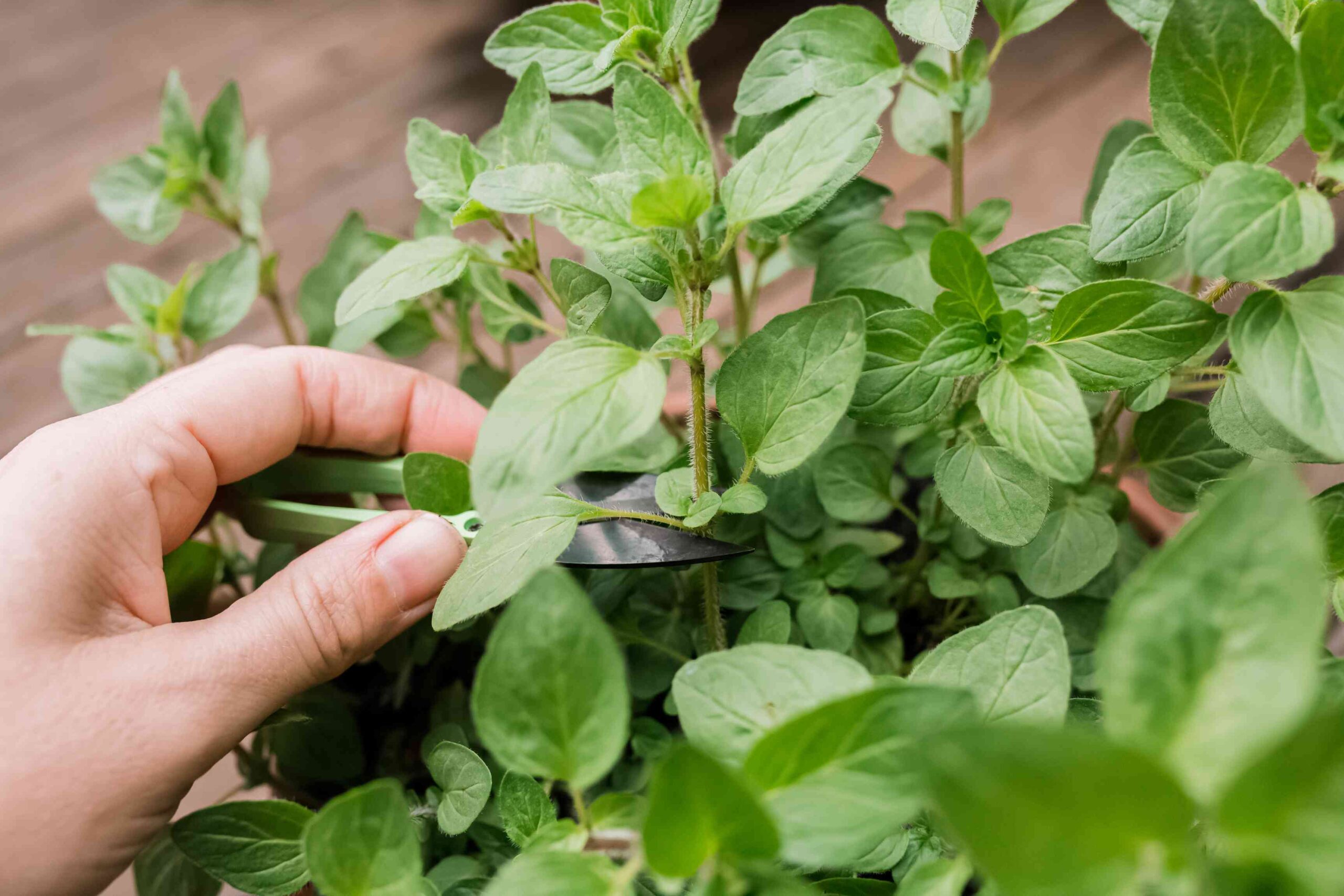Key Points
- Harvest oregano mid-morning during growing season just before it flowers.
- Regular harvesting boosts supply and keeps the plant healthy while encouraging more growth.
- Decide whether you want fresh or dried oregano to guide how much and which stems to cut.
Bursting with flavor, oregano adds a robust dimension to dishes and carries health benefits. How and when you harvest your herb can greatly affect its flavor and health in the long run. Learn when and how to harvest oregano for the best results possible.
What Is Oregano?
Oregano is an herb often used for cooking and as an antioxidant for health benefits. Its pronounced flavor is often described as herby, peppery, and minty, with an underlying faint bitterness. As a perennial, oregano will continue to grow year after year without replanting.
Oregano’s name is derived from the Greek, and it means “beauty of the mountain;” oregano can be grown for its appearance, developing small purple flowers that bloom during summer. Left unharvested, oregano can reach up to three feet high.
Want more gardening tips? Sign up for our free gardening newsletter for our best-growing tips, troubleshooting hacks, and more!
Different Types of Oregano
Oregano has 45 species, but a few types are used most often:
- Common oregano (Origanum vulgare): This popular type of oregano is frequently used in tomato sauces and on pizza. It pairs well with basil and thyme.
- Golden oregano (Origanum vulgare ‘Aureum’): Golden oregano has a milder taste than common oregano. It is often used as an ornamental plant due to its yellow foliage and pink and purple flowers.
- Mexican oregano (Lippia graveolens): Mexican oregano has a more lemony-minty flavor than common oregano, since it’s closely related to the mint family. Though its taste is strong, the bitterness is lessened, making it a staple of Southwest and Mexican dishes.
When to Harvest Oregano
Oregano should be harvested during the growing season, right before or when the flowers have developed. Harvest in mid-morning, after dew has evaporated but before heat picks up.
The growing season for oregano varies, but in many areas, it is from spring to early summer.
Harvesting Fresh vs. Dried Oregano
While milder herbs like cilantro, basil, and parsley taste better fresh than dried, oregano’s bold flavor carries through into dried form.
“I keep both [fresh and dried oregano] stocked for different reasons,” says herbalist Lindsay Etemadipour.
She prefers fresh oregano for concentrated flavor—like as a garnish for salads and pizzas—and dried oregano for soups, stews, and sauces.
Harvesting Oregano for Fresh Use
When harvesting oregano, snip off the tops of the stems. The stems include the leaves that will be removed for use. Below, leave at least four to six pairs of leaves per stem; this helps the oregano produce more leaves for future harvesting.
“When harvesting oregano, you want to focus on three things: time of day, frequency, and maturity,” Etemadipour says. “First, you want to ensure that you wait until oregano is about to flower, but not after it flowers. Once the plant flowers, the leaves will start to become bitter.”
Choosing the best time of day for harvesting is also critical. Harvest mid-morning, after nighttime dew has dried but before the day’s heat picks up.
“The herb’s flavor is most potent at this time due to the oils,” Etemadipour says.
Be sure to use sharp scissors or pruners, and cut about a third of the way down the stem to encourage it to re-shoot later on.
Harvesting Oregano for Dried Use
Harvesting oregano for dried use is similar to harvesting for fresh use, with a couple of differences. Harvest a few more leaves, and choose stems that are about to flower. Bundle them and hang upside down in a warm, dry area.
Give the bundles at least a week to dry out entirely, and then pack into airtight containers until you need to use it.
How to Care for Oregano After Harvesting
After harvesting, it’s important to care for oregano to enable regrowth and for the oregano plant’s continued health.
“Regular harvesting helps keep the plant healthy and producing,” Etemadipour says. “I usually harvest when the plant stems are about five inches tall. This will guarantee a few harvests a season.”
Water and fertilizer are important, as well as regularly cutting back any flowered stems.
Tips for Harvesting Oregano
- Pick the right time of day, usually mid-morning.
- Snip the leaves rather than pulling them off by hand.
- Prune (or harvest) oregano to maintain health, even if you don’t plan to consume the herb.
- Bundle the snipped stems with a rubber band, placing the band on the snipped end.
- If pruning for plant health only, prune aggressively: as low as 2 to 3 inches.
- For cooking use, harvest oregano around two times per year.
- Rinse the oregano right after harvesting to give it time to air-dry before use.
FAQ
-
You can harvest oregano after it flowers, but if you wait too long the leaves may taste bitter. Instead, aim to harvest oregano right as it is flowering.
-
To pick oregano so it keeps growing, leave four to six pairs of leaves per stem, which aids with regrowth. Avoid over-harvesting, pick only during the growing season, and regularly prune dead or yellowing leaves.











